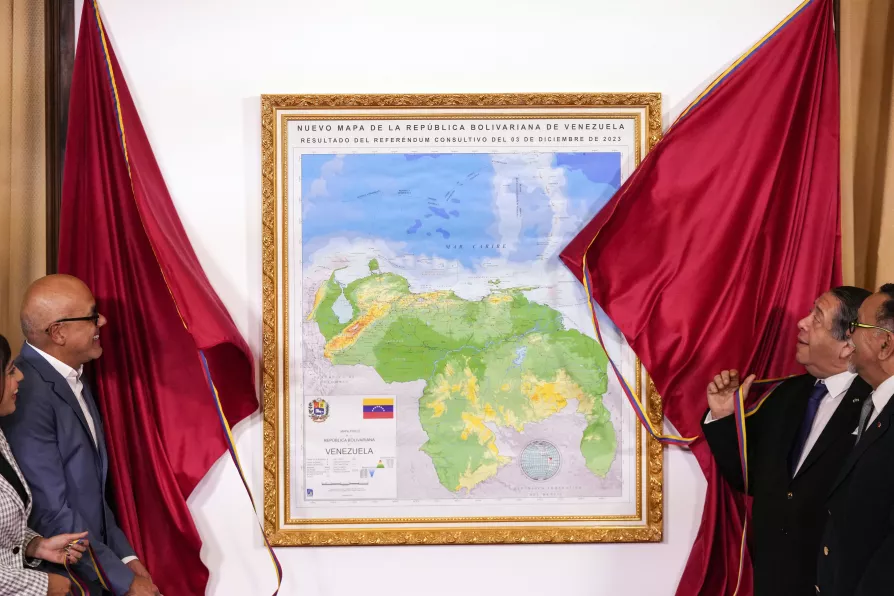As figures from Tucker Carlson to Nigel Farage flirt with neofascist rhetoric and mainstream leaders edge toward authoritarianism through war and repression, the conditions that once nurtured Hitlerism re-emerge — yet anti-war and anti-imperialist sentiments are also burgeoning anew, writes ANDREW MURRAY

 National Assembly President Jorge Rodriguez (left) and Chairman of the Special Commission for the Defence of Guyana Essequibo Hermann Escarra, unveil Venezuela's new map that includes the Essequibo territory, a swath of land that is administered and controlled by Guyana but claimed by Venezuela, in Caracas, Venezuela, Friday, December 8, 2023
National Assembly President Jorge Rodriguez (left) and Chairman of the Special Commission for the Defence of Guyana Essequibo Hermann Escarra, unveil Venezuela's new map that includes the Essequibo territory, a swath of land that is administered and controlled by Guyana but claimed by Venezuela, in Caracas, Venezuela, Friday, December 8, 2023
IF there were any misgivings about the actions undertaken by the government of Venezuela around the territorial dispute with Guyana, the joint military exercises between Guyana Defence Forces (GDF) and the US Southern Command (SouthCom) explain what really lies behind things.
Venezuela’s claimed territory, also known as Guayana Esequiba, is 159,500 square kilometres west of the river of the same name. SouthCom (the Pentagon) never intervenes in territorial disputes, unless the territory in question contains resources of geopolitical importance for US imperialism.
In an interview on January 21 2023, SouthCom Chief Laura Richardson stressed how important Latin America was for US foreign policy because of “its rich resources,” a point she has been making since her appointment in 2021.

The global left must be unwavering in it is support for Venezuela as Washington increases its aggression, and clear-eyed about the West’s cynical motives for targeting it, says CLAUDIA WEBBE

US baseless accusations of drug trafficking and the outrageous putting of a bounty on a president of a sovereign country do not bode well, reports PABLO MERIGUET












